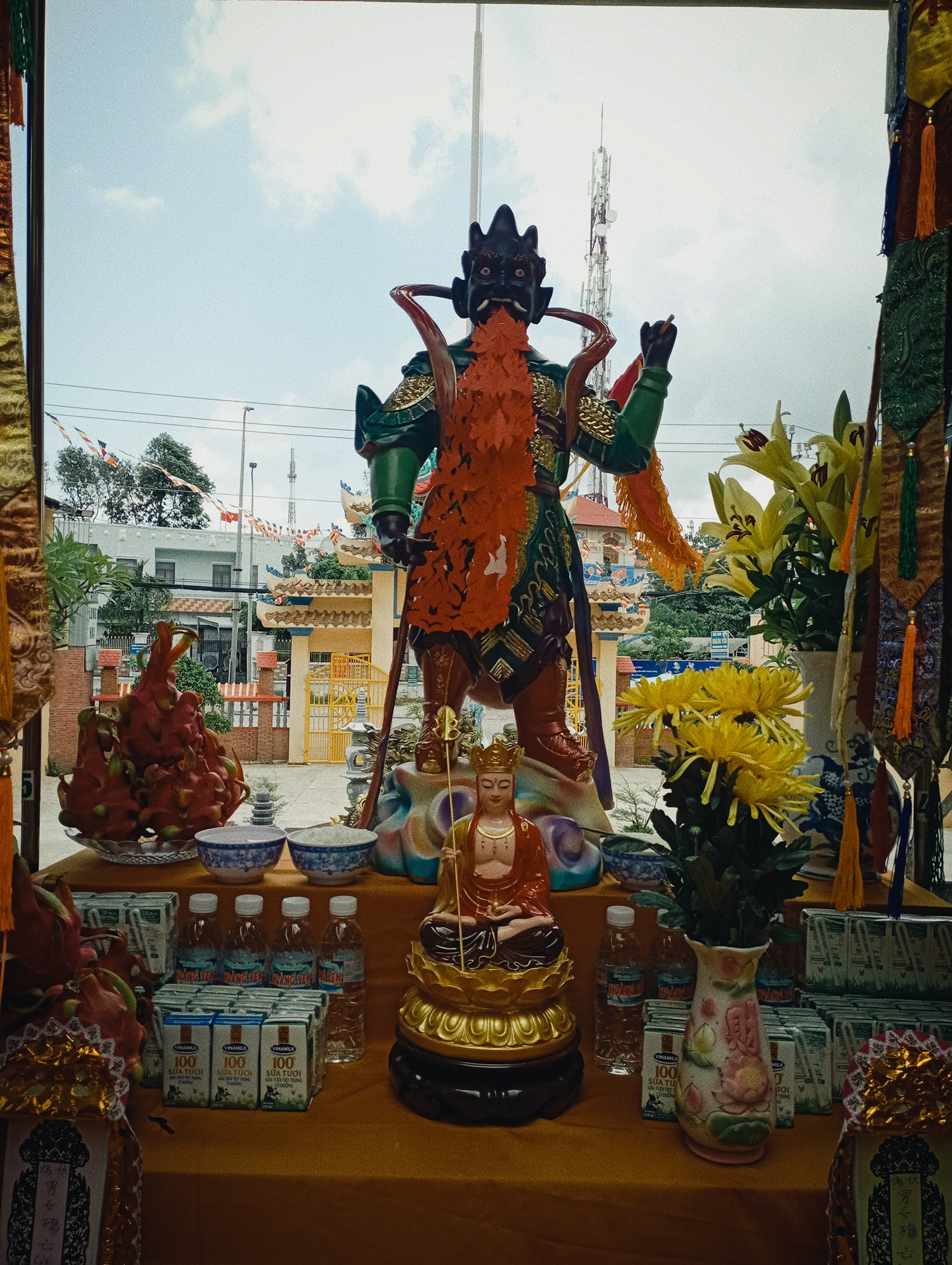Sung Hung Co Tu is one of the oldest Buddhist temples in Duong Dong, Phu Quoc Special Zone, An Giang Province. Perched on a small hill in the town center, the temple follows an ancient architectural layout deeply rooted in Southern Vietnamese folk tradition: a shrine at the front and the main pagoda situated behind.
Meaning Behind the Name
Historical records indicate that the temple was founded in the late 19th century on what was once a quiet cemetery. Locals built two small temples—Sung Nghia Tu and Hung Nhan Tu—to worship and pray for the wandering spirits buried in the area. Over time, these two temples were unified into a single pagoda named “Sung Hung,” formed by combining the names of both original establishments.

Historical Formation of the Pagoda
According to preserved documents—and as described by poet Đông Hồ—the pagoda originated from the merger of the two small temples that once stood in the old cemetery grounds. A French research monograph on Phu Quoc from 1906 also mentioned the temple, noting that “Phu Quoc has only one pagoda in Duong Dong where Annamese, Chinese, and Minh Huong people alike come to bow and pray.”
Although the exact founding date and the early abbots remain unknown, historians agree that Sung Hung Pagoda was formally established in the late 19th century. The 5th and 6th abbots, Venerable Thich Dat Vinh and Venerable Thich Minh Khiem, belonged to the 38th generation of the Lam Te Zen lineage.
In the early 1920s, Venerable Tinh Nghia—appointed by the Quan Am Patriarchal Temple of Hong Ngu—was sent to Phu Quoc to uphold the teachings of the Co Son Mon tradition. He undertook the first major restoration of the temple in 1924 and served as the 7th abbot until his passing on the 15th day of the second lunar month, 1946. His stupa remains within the pagoda grounds.
He was succeeded by Venerable Thich Hue Chanh (birth name Đinh Văn Dần), who oversaw a major reconstruction in 1960. This renovation introduced yin-yang roof tiles and brick walls, giving the temple greater durability and creating a dignified environment for monastic practice.
After Venerable Hue Chanh entered nirvana in 2007, Venerable Hue Thong became the 9th abbot until his passing in 2015. The pagoda is now cared for and managed by Bhikkhu Hue Minh.
Architecture of Sung Hung Co Tu
The pagoda stands within a spacious courtyard and features several important structures including the ancestral house and the main ceremonial hall. The architecture preserves the classic southern design of “shrine in front, pagoda behind,” with brick walls and yin-yang tiles from the 1924 restoration.
The main gate faces north, leading into a broad courtyard lined with traditional features: bonsai trees, sculpted Buddhist reliefs, and a lotus pond at the center topped with a serene statue of Avalokitesvara Bodhisattva. Behind the statue stands a ceremonial flagpole. To the left is a shrine dedicated to Lady Chua Xu Nuong Nuong, while opposite is a shrine honoring the national hero Nguyen Trung Truc.
Inside the main hall, golden lacquered couplets and red gilded plaques reflect both reverence and artistic refinement. The central altar is arranged in three tiers representing the Three Eternal Buddhas: Amitabha in the middle, Maha Sthamaprapta on the right, and Avalokitesvara on the left. Adjacent chambers house altars dedicated to the Ten Kings of Hell and the Five Kings of the Underworld, elements commonly found in traditional Vietnamese Buddhist temples.
Behind the main hall lies the ancestral house and monks’ quarters, shaded by tall century-old trees that create a tranquil and contemplative atmosphere. Its proximity to other major spiritual landmarks—such as Dinh Cau and the Temple of Thuy Long Thanh Mau—forms one of Phu Quoc’s most important cultural and spiritual clusters.
Sung Hung Co Tu is not only a sacred space for Buddhist practice but also a historical monument that preserves over a century of spiritual heritage. For travelers exploring the heart of Phu Quoc, a visit to this ancient pagoda provides a profound glimpse into the island’s cultural and religious identity.








